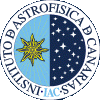

|
Instrument modes for Photometer and AOTs |
| Instrument modes and AOTs The observing modes are combinations of instrument modes and satellite pointing modes.
These observing modes are accessible to the observer through Astronomical Observation Templates (AOT) which are "filled out" throug a graphical user interface, HSpot. One of the three different AOT has been defined for the photometer. All further details of the observation are defined as parameters within the AOT through HSpot. Regular integration periods on the internal calibration sources are inserted automatically. The AOTs are in process of definition and will undergo further optimization.
More details, see PACS SPIE document or see Observer Manual
Documents"PACS Observer's Manual" is the reference manual for PACS observers and the Herschel Observation Planning Tool is the Herschel-Spot (HSpot) User's Guiden.
CreditsThe contents of this page are based on the PACS observer's Manual produced by Bruno Altieri, Roland Vavrek and the PACS Instrument Control Centre and the Herschel Pointing Modes document.
For more information, see Observer ManualGo back to PACS Instrument page
PACS HOME -
PACS SCIENCE -
INSTRUMENTS -
OBSERVER SUPPORT
sigroth@iac.es http://research.iac.es/proyecto/herschel/pacs This file was last modified on 21 May 2007.
|